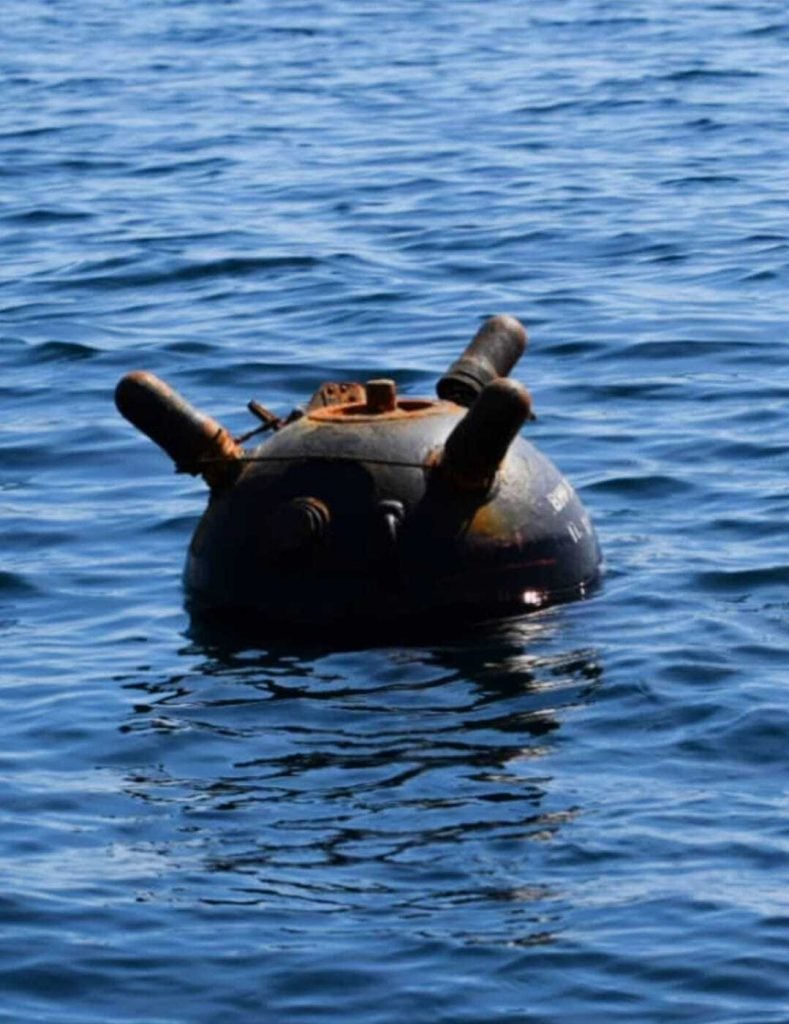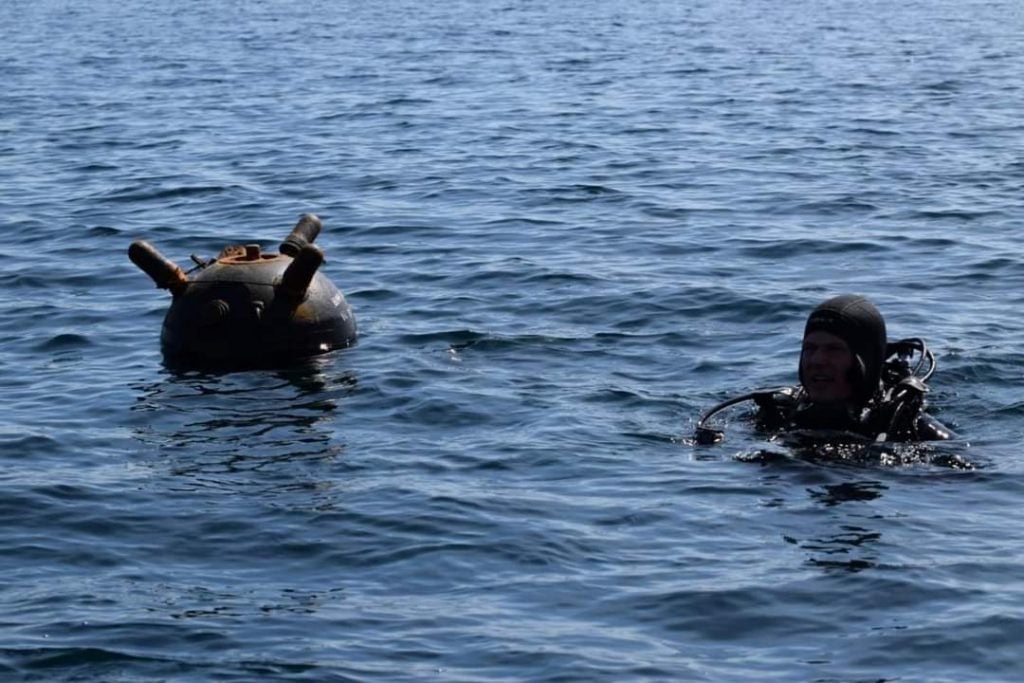Stray Sea Mines in The Black Sea Threaten Turkey And Romania
The current security situation in the Black Sea is becoming even more dangerous due to stray sea mines as Russia’s invasion of Ukraine continues. The Russian Federation’s Federal Security Service (FSB) issued a warning to countries in the region on 19 March, claiming that 420 old mines, which the Ukrainian Navy had laid off the coast of Odessa to be used against Russian warships, were dragged out of their anchors and drifted in the Black Sea as a result of a storm.
Making a statement to Reuters on 21 March, after Russia’s claims, deputy head of Ukraine’s state-run Maritime Administration Viktor Vyshnov said, “this is complete disinformation from the Russian side. This was done to justify the closure of these districts of the Black Sea under so called ‘danger of mines’.” However, a week after Viktor Vyshnov’s statement, stray Soviet-era sea mines began to appear in the Black Sea.
On 26 March, the first mine, which is thought to be one of the mines placed by Ukraine at port entrances, was discovered near the Bosphorus’s entrance. The Bosphorus was thereafter blocked to maritime traffic. Experts investigated the mine, which was discovered by fishermen off the coast of Sarıyer-Garipçe and reported to the Coast Guard Command.
Turkish Defense Minister Hulusi Akar responded to questions about the mine discovered off the coast of the Bosphorus and said: “in the morning, information came from a commercial ship off the Bosphorus that a ‘mine-like object was seen’. Our units were already intensively patrolling and performing their duties in those areas. Our SAS team was quickly dispatched to the area. After it was determined that the object in question was a mine, (the mine) was moved to a safe location. Our SAS team neutralized the mine, which was determined to be an old model as a result of the investigation. We discussed the matter with both Russian and Ukrainian officials. Our cooperation is ongoing.”
The Turkish Ministry of Defense posted on social media two days after the first mine was discovered in Turkish territorial waters: “on the morning of March 28, 2022, a mine was detected off the İğneada coast near the Bulgarian border, and the Underwater Defense (SAS) Teams in the region were quickly dispatched to the incident site.” In the following hours, the Ministry announced that the second sea mine in question was secured and neutralized by SAS Teams.
Romania stated on 28 March that it had detected a sea mine in the Black Sea, following Turkey. At around 8AM. local time, a fishing vessel called “Olimpus 1” discovered a mine drifting around 39 nautical miles off Midia Port in Romania, according to the Romanian Ministry of Defense. The mine was neutralized, according to the Ministry, by the Romanian minesweeper ship Vice Admiral Constantin Balescu and a group of demining divers.
These mines, which have so far been discovered in Turkey and Romania, have also mobilized Bulgaria and Georgia, which are Black Sea neighbors. According to the Bulgarian Ministry of Defense, after Turkey discovered a sea mine at Igneada, around 100 kilometers from Bulgaria’s border, the Bulgarian Naval Forces also received reports of mine sightings. A Eurocopter AS565 Panther helicopter from Chaika Air Base and a navy vessel were dispatched to check the suspected locations, according to the ministry, and investigations will continue. Georgia also stated that necessary measures had been taken.
So far, neither Turkey nor Romania has revealed any information on the types of mines that were neutralized. The images shared on social media and by other ministries indicate that these are the type of mines once employed by the former Soviet Union during World War Two. Retired Major General Mehmet Okkan, speaking on the matter during a live CNN Türk broadcast, claimed that one of the old type mines in question was a YaM type Soviet mine. The YaM type sea mine was produced by the USSR during the World War Two. The mine weighs 172 kilograms and contains 20 kg of TNT explosives. It is placed in the water at a depth of 1-2 meters. The mine, which operates on the principle of contact, can damage or sink ships with the impact of fragments when it detonates.

It is still unknown who is to blame for the mines in the Black Sea. Ukraine allegedly planted mines on purpose to allow NATO Mine Countermeasures Groups to pass the Straits, according to pro-Russian media. Ukrainian officials, on the other hand, place the blame on Russia. The Ukrainians allege that the mines were planted by the Russians in order to stifle all traffic in the Black Sea, and that they are trying to blame the Kyiv administration. In any case, these mines provide a new hazard to neutral countries and civilian maritime and fishing vessels, and depending on the unknown number of them loose at sea they could be a significant challenge in the days ahead.

